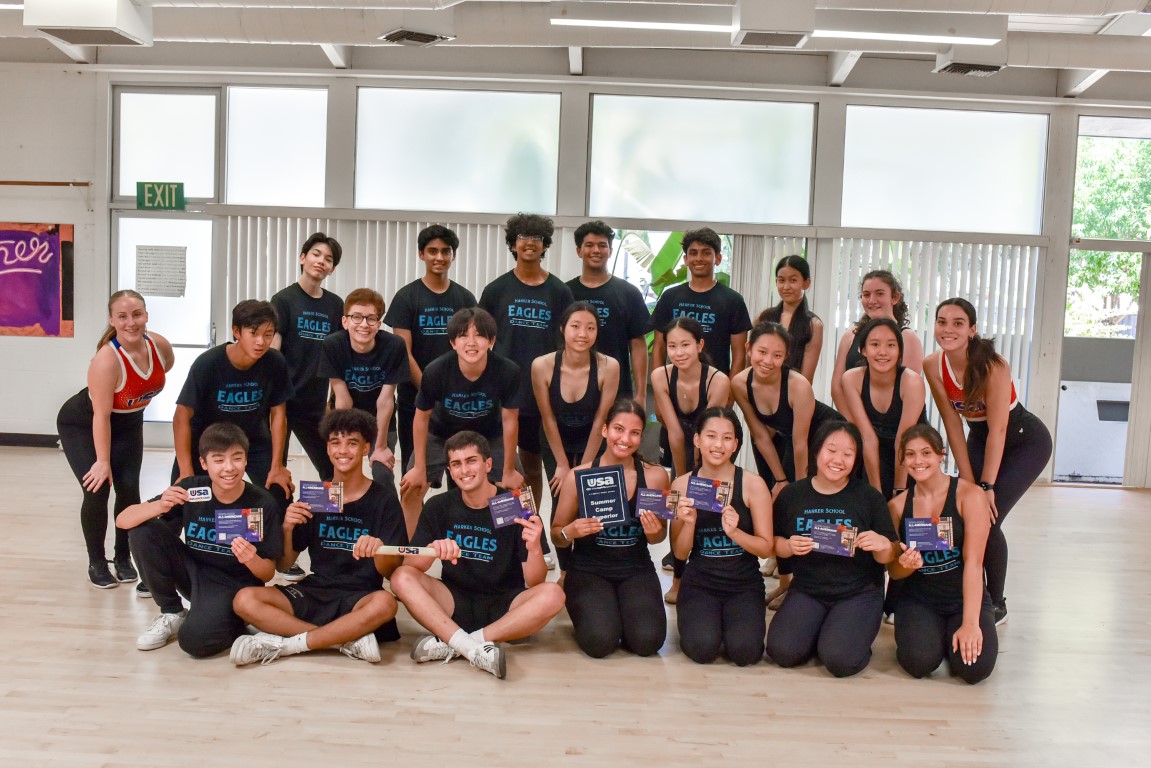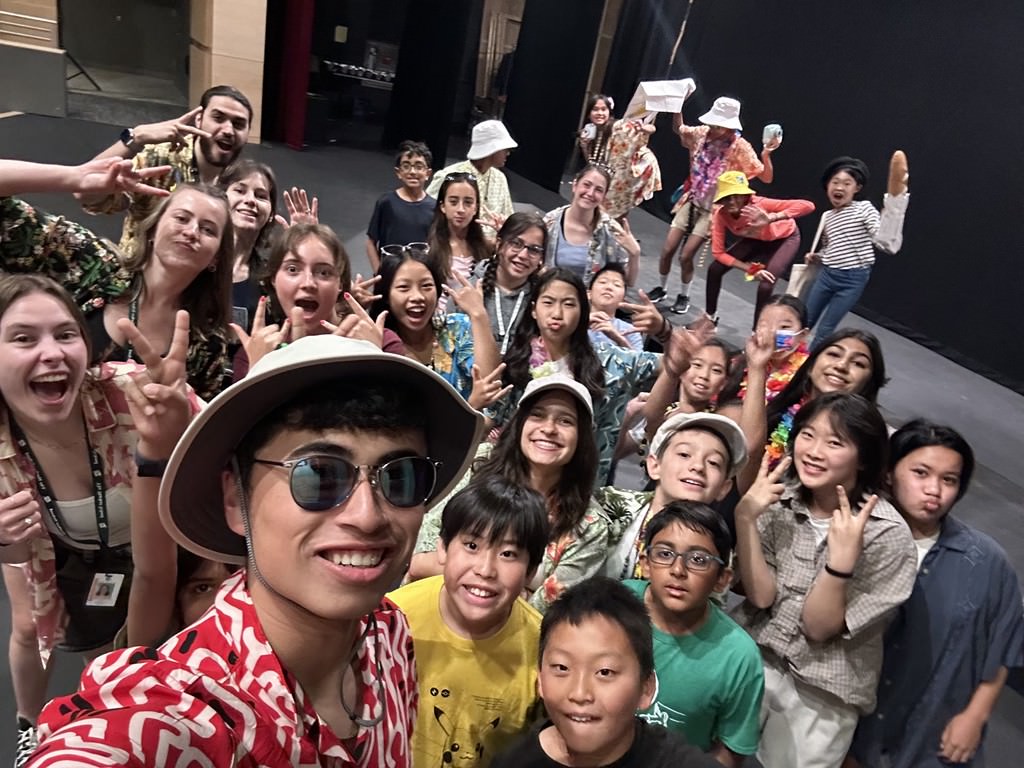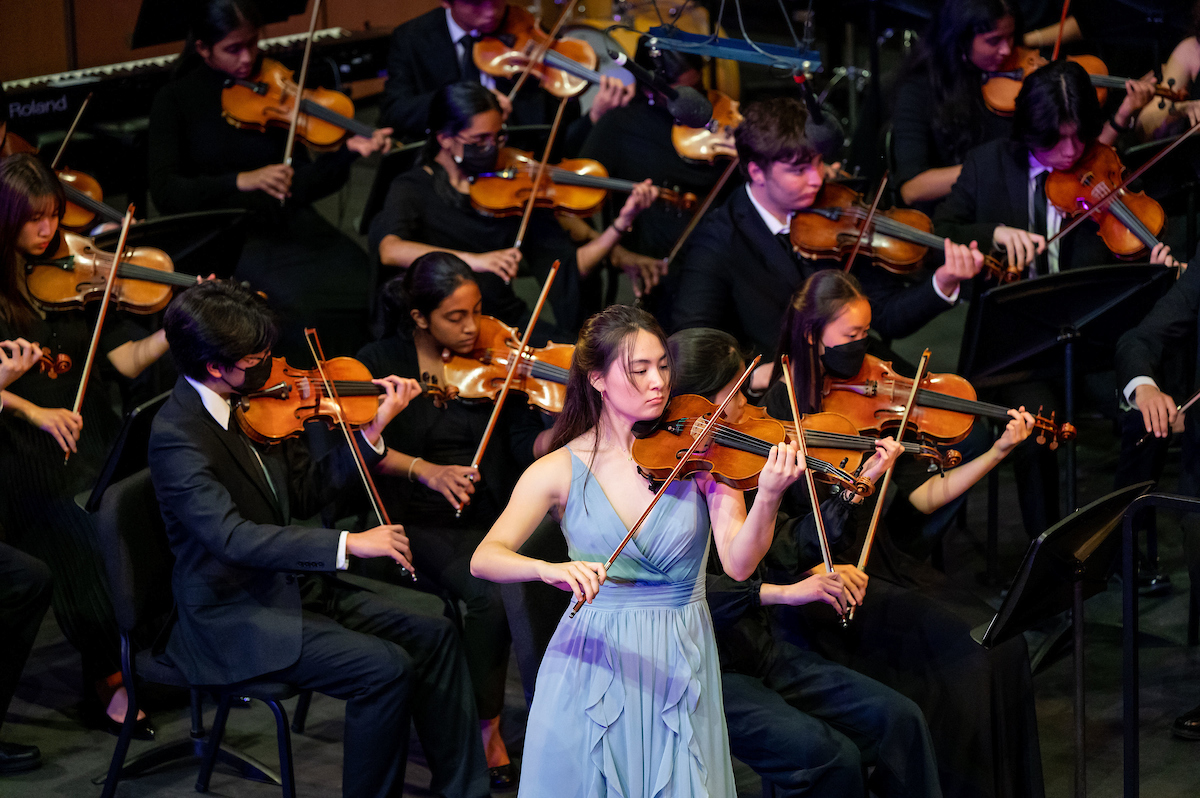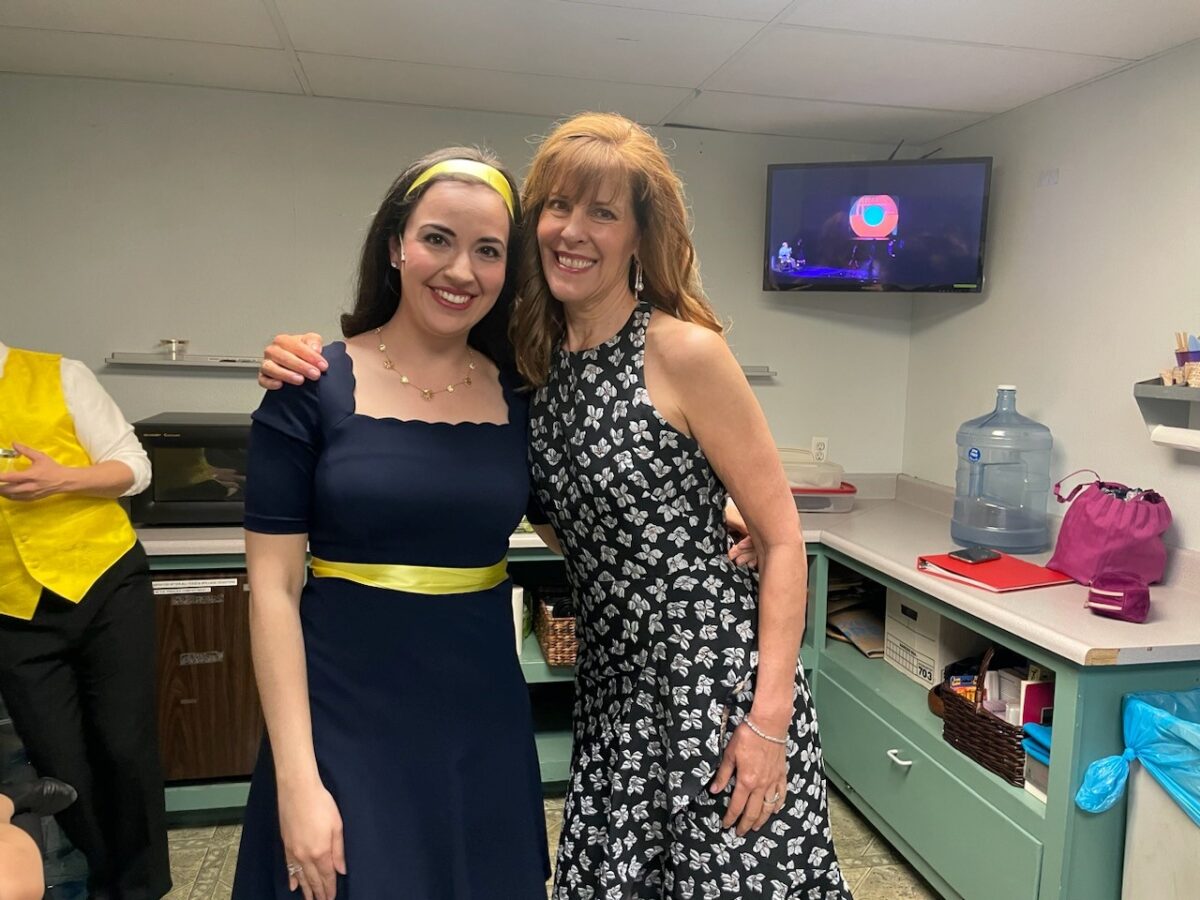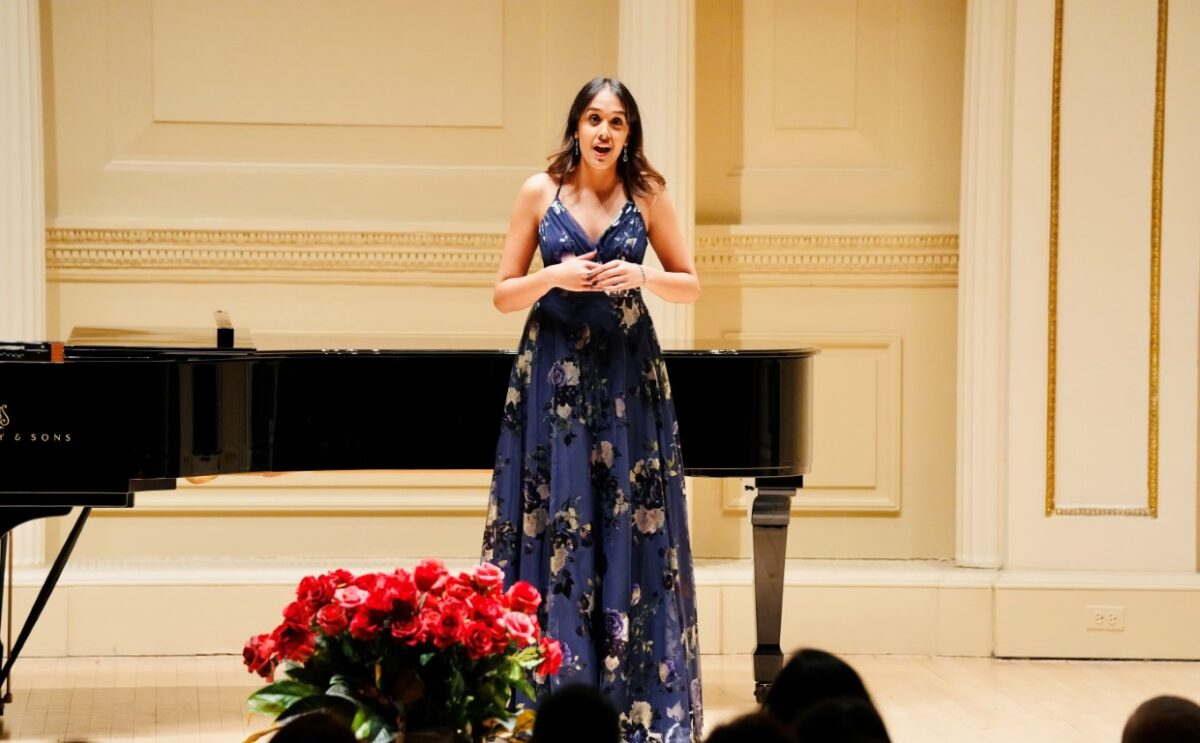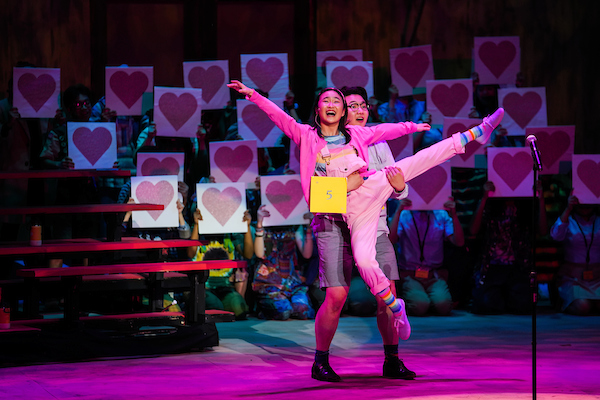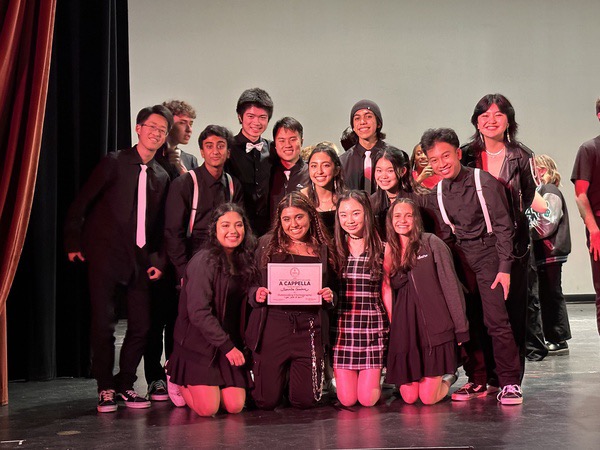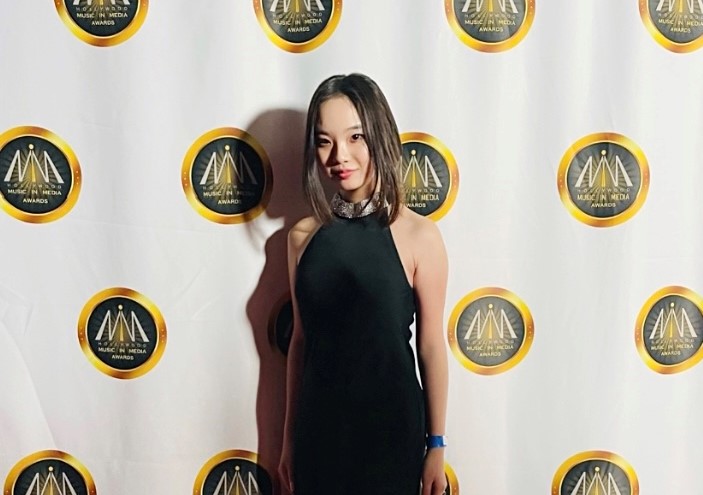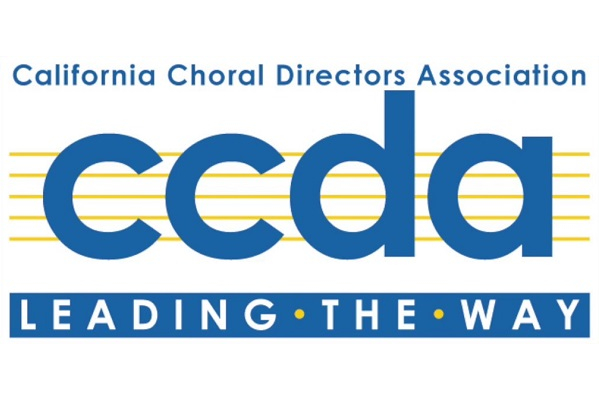Last weekend, the Harker Dance Company and Kinetic Krew participated in a Dance Camp by the United Spirit Assocation.
Performing Arts
Conservatory alums further love of arts through summer teaching
This year marked the sixth session of Summer @ the Conservatory, the Harker Conservatory’s comprehensive performing arts program in theater, musical theater and film acting.
Gallery: Spring 2023 Performing Arts
The special slide show contains photos from every show performed during the spring 2023 performing arts season.
Performing arts chair and alum catch up at South Bay Musical Theatre celebration
Laura Lang-Ree, Harker performing arts chair, and Ann Luceña ’04 (Harker middle school ’00) appeared on Saturday at South Bay Musical Theatre’s 60th anniversary celebration, “Welcome to the Sixties.”
Junior performs at Carnegie Hall as part of international vocal competition
Arushi Sharma, grade 11, performed earlier this month at Carnegie Hall in New York City as part of the Winners Recital of the American Protégé International Vocal Competition.
Upper school spring musical nominated for two Rita Moreno Awards
The 2023 upper school spring musical, “The 25th Annual Putnam County Spelling Bee,” has been nominated for Rita Moreno Awards for Overall Production and Outstanding Actress (Selina Xu, grade 11).
Downbeat reaches ICHSA quarterfinal round, senior wins choreography award
The upper school’s show choir group placed fourth in the International Competition of High School A Capella’s west region.
Junior Shayla He nominated for Hollywood Music in Media Award
Junior Shayla He was nominated for a Hollywood Music in Media Award (HMMA) in the Original Recording category.
Harker student declared winner in electronic music competition
Ethan Guan, grade 10, was announced as the K-8 winner in the 2022 Electronic Music Composition Competition held by the National Association for Music Educators (NAfME).
13 Harker singers named to regional honor choir
13 Harker singers were recently declared members of the California Choral Directors Association (CCDA) Coastal Region Honor Choir.
